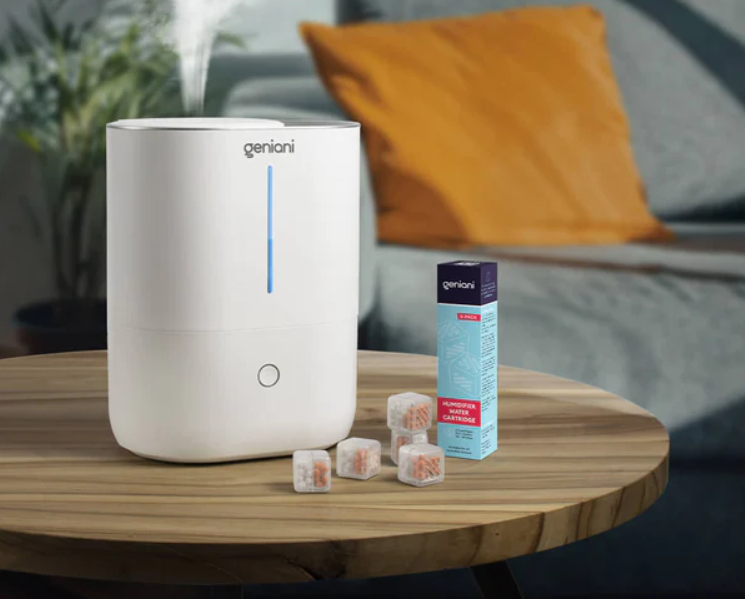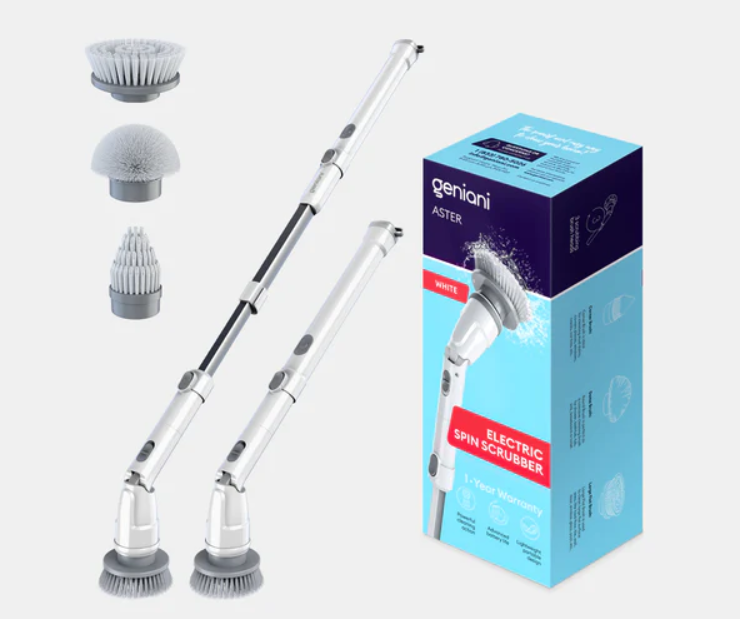What is indoor air pollution

To understand what bad air quality is and how to improve it, we should start by talking about pollution. Indoor air pollution is a very real and dangerous thing because indoor air is far more concentrated with pollutants than outdoor air. Poor air quality can irritate the eyes, nose, and throat, cause shortness of breath, aggravate asthma and other respiratory conditions, and affect the heart and cardiovascular system. Breathing polluted air for long periods of time can cause more serious problems. Particulate matter (PM), ozone, nitrogen dioxide, sulfur dioxide, dust, mold, and pet dander – can all cause health risks. The size of the particles also matters. The smaller the particle, the worse it is. The most health-damaging particles are those with a diameter of 10 microns or less which can penetrate and lodge deep inside the lungs. ‘Chronic exposure to particles contributes to the risk of developing cardiovascular and respiratory diseases, as well as of lung cancer,’ says the WHO. Indoor air pollution causes eye irritation, breathing difficulties, asthma, and an increase in hospital admissions and mortality among people with heart disease.
Who’s at risk
Some of the pollutants have been in human homes since our cave-dwelling days. Others have been introduced to our homes in modern times. And some come from the natural environment, including bacteria and mold. Everyone is at risk, it is not a joke!
Children

Babies breathe faster than adults. Plus, they are more sensitive to pollution. Since their passages are narrower, it takes less inflammation or irritation to obstruct their airways. The other reason why children are at risk is that they spend a lot of time outdoors, they are more active and younger. 🙂 They also are more likely to have asthma or other respiratory illnesses, which are aggravated by air pollution.
Seniors
Older people with heart disease or diabetes are at greater risk. People with diabetes are at increased risk in part because they also have a higher risk of underlying cardiovascular disease. Their immune system is not as strong, therefore, older people are at higher risk for air pollution.
Active adults
Adults of all ages who are extremely active and prefer to exercise or work outdoors are susceptible to air pollution because they have a higher level of exposure. Workouts cause people to breathe faster and more deeply, which draws more air into the lungs. If you like to do workouts outside try to do it in the morning. It’s better to exercise in the morning when ozone concentrations are expected to be less elevated.
The most dangerous effects of bad air quality on your health

The health effects of air pollution are serious. Did you know that one-third of deaths from stroke, lung cancer, and heart disease are due to air pollution? This is not as serious as smoking tobacco, but bad air quality is more dangerous than, say, the effects of eating too much salt.
Short-term exposure
What can cause a short-term exposure to air pollution? Ground-level ozone can affect the respiratory system. It happens because the majority of the pollutants enter the body through a person’s airways. Short-term exposure to air pollution may lead to respiratory infections and reduced lung function. It may also aggravate asthma in people with this condition, damage your eyes and respiratory tract, as well as irritating the skin.
Long-term exposure
Research into the long-term health problems that air pollution can cause is ongoing. It has linked air pollution to serious health problems, adverse birth outcomes, and even premature death.
Chronic obstructive pulmonary disease
A lot of harmful pollutants may cause chronic obstructive pulmonary disease (COPD). The World Health Organization (WHO) found that air pollution causes 43% of COPD issues and deaths worldwide. COPD is a group of illnesses that cause breathing-related difficulties. It includes emphysema and chronic bronchitis. These diseases block the airways and make it difficult for a person to breathe. The right treatment can help reduce symptoms and improve quality of life.
Lung cancer
The WHO introduced research where it was found that air pollution causes 29% of all lung cancer cases and deaths. Particle pollutants are likely to contribute to this figure significantly as their small size allows them to reach the lower respiratory tract.
Cardiovascular disease
If you live in an area with a high level of air pollution, you are at a higher risk of death from stroke. Air pollution may trigger stroke and heart attacks. Air pollution was responsible for 19% of cardiovascular deaths in 2015. It was also the cause of about 21% of deaths due to stroke and 24% of deaths from coronary heart disease.
What are the causes of poor air quality at home
Pollutants can cause a wide range of short-term and long-term health problems. Adding to the challenges, some people are unusually sensitive to certain pollutants. So, what causes the bad air quality?
Carpet fumes
When you buy a new carpet, you should remember that it will release chemicals from its vinyl backing. Plus, the glue that is used to hold the carpet to the floor also releases chemicals. It is known as off-gassing. These chemicals can cause headaches, dizziness, nausea, shortness of breath (dyspnea), and asthma-like reactions. Kids who suffer from asthma and allergies may experience a tough time depending on their sensitivity. Off-gassing can be released for five years after the installation of a new carpet. But, the major amount of off-gassing takes place in the first few months. A HEPA air filter is a good choice to reduce these harmful particles. If possible, you may just want to leave the home for a few days following the installation.
Paint and VOCs
Household paints are dangerous and really harmful to our health due to volatile organic compounds (VOCs) that they include. VOCs can cause health problems in high enough concentrations, and a fresh coat of paint may just do the trick. Have you ever noticed a headache after painting? It is because of the paint. Some of these VOCs are known carcinogens—they have been linked with cancer. These chemicals include methylene chloride and benzene.
Home cleaners
Professional cleaners increase the risk of asthma and other respiratory problems. Moreover, studies associated sprays with a 100% higher chance of asthma diagnosis, as well as other health problems. It is important to use eco-friendly, chemical-free home cleaning products. You can even make them yourself at home. Read our article to get more information about homemade cleaning products.
Toxins from nonstick pots and pans
One of the chemicals used in the past to make these pots and pans have been linked with kidney, thyroid, prostate, bladder, and ovarian cancers. The chemical responsible, PFOA, has largely been eliminated thanks to an agreement between major manufacturers and the EPA. Nonstick cookery releases toxic fumes when it heats up over 500 F. This can lead to symptoms known as “Teflon flu,” and it can even kill pet birds. Be careful not to overheat nonstick pots and pans.
Smoke
Breathing in smoke can have nearly immediate effects on health including coughing, trouble breathing, stinging eyes, scratchy throat, headaches, and asthma attacks. For kids, it makes asthma attacks more frequent and more severe, and it has been associated with a greater risk of sudden infant death syndrome. Adults are more at risk of heart disease, stroke, and lung cancer when they are exposed to secondhand smoke.
Fireplaces

Using wood or charcoal to heat your home may be a quaint way to stay warm. On the other hand, it also adds harmful substances to the air you breathe. Worldwide nearly half of all people use simple stoves or open fires to keep warm. More than 4 million people die connected to cooking using solid fuels (including wood and charcoal). If you use a solid fuel furnace or fireplace, you can avoid these health hazards by modernizing your heating.
Gas stoves
If you use natural gas stoves, you’ll really want to pay attention to this. One study found that CO and NO2 levels are substantially higher in homes with gas ovens, especially in the winter when people are less likely to open their windows.
Radon in your home
Radon is a radioactive gas that bubbles up from the ground as naturally occurring uranium breaks down. And if your home has cracks, a basement, or a crawlspace, this odorless gas can find its way in, raising the risk of lung cancer in your home.
Office equipment

Copying machines and printers can harm air quality, too. One study found that workers in photocopy centers have an increased risk of heart disease, sore throats, skin irritation, asthma, and other health problems. That’s because copy machines emit several toxic gasses, such as nitrogen dioxide and ozone. If you have some office equipment at home, be really careful!
Pesticide pollution
Did you know that almost 80% of the pesticides come from indoor sources? Recent studies have found more pesticides in the air inside homes than can be explained by recent pesticide use alone. This could be from contaminated soil or dust that finds its way inside. Pesticide exposure carries health risks like nerve damage, eye, ear, and throat irritation, and an increased risk of cancer.
Wrong air purifier
Of course, an air purifier is a great device to clean your indoor air. But they are not all made in the same way, there are different types of air purifiers. And some air purifiers may be causing more harm than good. The problem comes from air cleaners that emit ozone. Ozone exists in abundance high in the earth’s atmosphere, but it is only found in small quantities closer to the earth’s surface. One exception is smog, which contains a large concentration of ozone.
Pet dander
Of course, you love your furry critters. But do you love what they stir up in your home’s air? Pets who shed such as dogs and cats leave skin flakes known as dander in the air. Dander is an allergen for many and can cause wheezing, irritation, coughing fits, and, in extreme cases, anaphylactic shock.
Mold
Mold in the home can lead to some nasty repercussions. Some of the health effects include coughing fits, sneezing, dizziness, fever, and exhaustion. They can sometimes cause digestive distress, too, and can trigger asthma attacks.
Harmful chemicals in lotions, deodorants, and shampoos
You use them to stay clean and to smell nice. Unfortunately, many personal care products may be dirtying your air at the same time. Such products include different VOCs and formaldehyde. When you have the choice, pick unscented personal care products.
The main symptoms of poor air quality
What many people don’t realize about keeping the air in their homes clean is that it is not just a matter of washing or vacuuming. The detergents and cleaning products you use can actually contribute to your poor air quality, and so can many of your home appliances. Here are a few areas where you can do quality control on the air in your home.
Your furnace or central air unit
If you don’t see problems with your home heating system do a furnace check-up. The same is true for air conditioners, both central air units, and the portable kind. Keep up with the regular maintenance on these units, including inspections and tune-ups that require you to call in a specialist. It means that your home air circulation will be more efficient, making it easier for your furnace filter to do its job effectively.
Home appliances
Furnaces and air conditioning units are not the only places where you will find air filters working to keep the air in your home fresh and clean. Dehumidifiers, home air purifiers, vacuum cleaners, stove hoods, and clothes dryers all circulate air, and they all have filters that need to be regularly cleaned, as well as ducting and fans that can leak dirty air if they are not properly maintained. Inspecting and fixing any issues in these appliances, or even just cleaning their air filters regularly, will help a lot with your home’s air.
Filters
You should change your filters regularly to keep the air at home pure and clean. It is a recommended step in almost every home furnace maintenance schedule. Since air filters are replaced so frequently, it can be expensive for your budget. Carbon activated, or true HEPA filters are specially designed to be hypoallergenic and will be a perfect choice for your household. These filters will trap more finer particles, making your overall home air quality much better without a lot of effort.
Vacuum
Most vacuum cleaners have basic HEPA-rated air filters, and that is great! Going for a premium vacuum cleaner with a good air filtration system and the ability to trap the finest particles from your air and carpet can help a lot. You do need to make sure to clean it regularly and to keep it from over-filling during use to realize the full benefits of this upgrade, but when you clean your home with a top of the line vacuum that is in peak condition, you will notice the difference right away.
Bathroom mold and other moisture issues

Sinks and bathrooms can have black mold and deposits. Cleaning mold that you find right away is a key to protect your family’s overall health. Mold is not just bad for your respiratory system. It can be toxic in other ways as well. If you find any deposits, clean them with borax or borax-and-citrus mixture for quick, effective results. Then, assess the area for any repairs or other maintenance concerns you may need to fix and dry it out before attempting any repairs. For bathroom mold, remember to run ventilation fans for about a half-hour after baths and showers to help prevent new buildup.
Artificial cleaning products
You hear a lot about toxins and other health problems, and sometimes it seems like those warnings might be a bit over-the-top. When it comes to cleaning agents, detergents, and other household chemicals, though, there really are a lot of harsh chemicals with fumes that linger, causing distress for people with sensitive respiratory systems, including children. You can easily reduce chemical fumes around the house and make it easier to breathe without compromising on cleanliness, though. Common, natural citrus can be used to make a variety of home cleaning agents that keep your air fresh while they scrub every surface clean. Other options using tea tree oil, vinegar, or combinations of natural solutions are also available.
Scented air fresheners
While they do cover the signs of poor air quality very well, they also contribute to the problems that come from having too many fine particles in the air. It irritates the lungs and throat which leads to problems for people with asthma and other allergies. Candles and incense are especially an issue because smoke and other carbon particulates get into the air alongside the artificial scents. If you need some kind of fresh scent to pick you up around the house, consider dry alternatives that can be made from natural ingredients, such as orange peels. They will help freshen the house and improve your air quality without adding to existing issues with your air.
Going without an air purifier
If you don’t already have a home air purifier, it really is worthwhile to get one. Air purifiers help draw dust and other suspended particles out of the air, making it so your furnace filter doesn’t need to work as hard. Many are also capable of trapping fine particles that would normally come to rest on the carpet, where your vacuum would have to deal with it. This is an essential step toward air purity that also has the extra bonus effect of being able to reduce the amount of work involved in applying your other cleaning strategies.
What to do when air quality is bad
Poor air quality has an important impact on the comfort of your home and your overall health. While some symptoms may seem mild, they may often escalate to more complex health complications. This can be easily minimized by doing both of the following:
- Change your air filters on a regular basis.
- Use an air purifier with a HEPA filter.
By paying close attention to the symptoms you may be experiencing and identifying the sources of the problems, you can easily address the issue and work to improve your indoor air quality.







